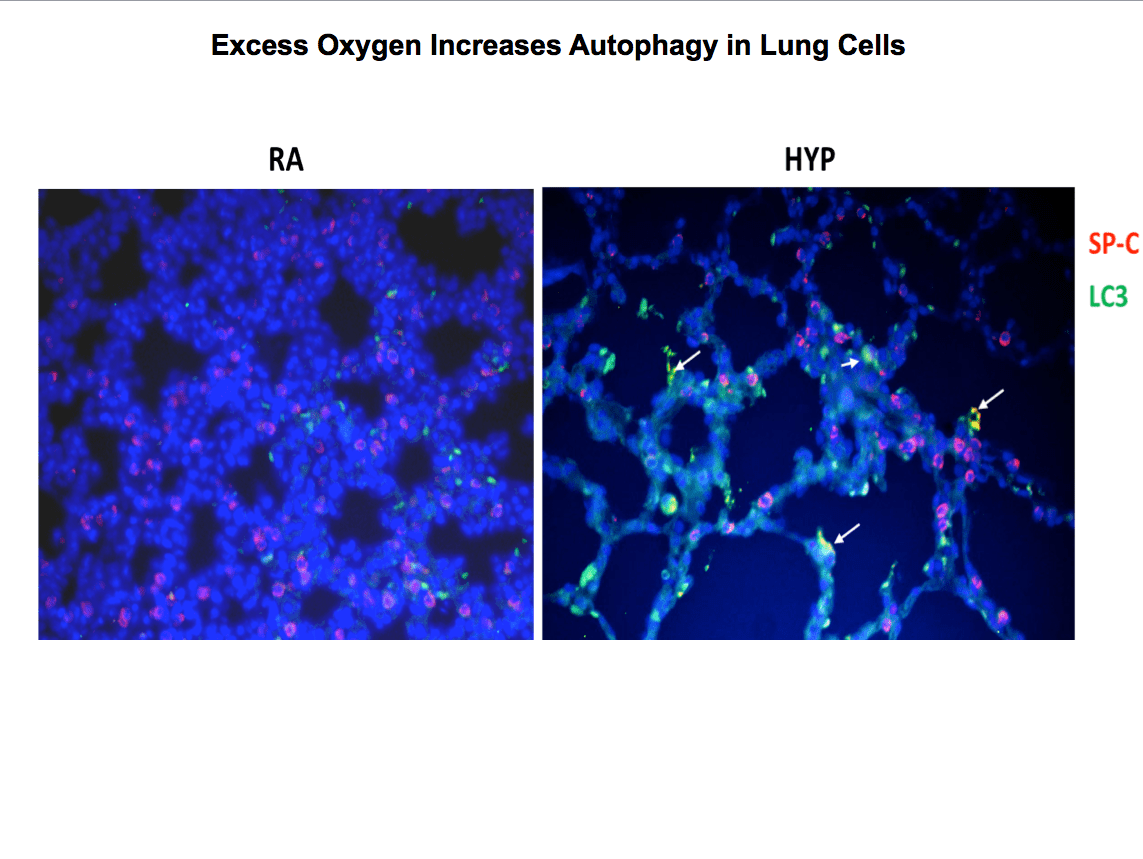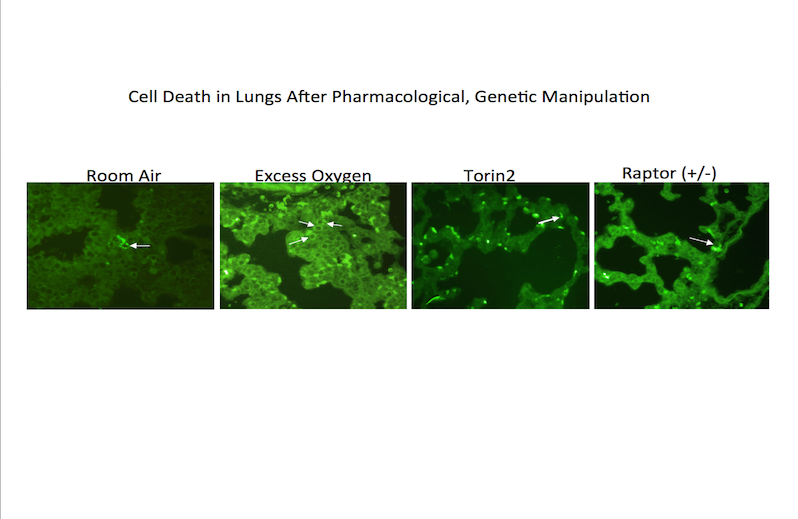By Causing Cells to Cannibalize Themselves, Researchers Prevent Lung Injury in Mice

By triggering a process called autophagy — in which cells literally engulf their own insides —researchers from Drexel University and Yale University were able to decrease lung injury in mice that were exposed to high concentrations of oxygen. The study, published this month in the American Journal of Respiratory Cell and Molecular Biology, offers a potential new solution for preventing chronic lung conditions that affect premature babies.
“When a cell is under extreme stress, autophagy is a self-sacrificing, protective response. The cell conserves energy by getting rid of its nonessential organelles,” said Vineet Bhandari, MD, a faculty member in the College of Medicine and chief of neonatal medicine at St. Christopher’s Hospital for Children. “We thought that if we were able enhance autophagy in the lungs, then we could decrease cell death. And that’s exactly what we saw.”
Bhandari studies Bronchopulmonary Dysplasia (BPD), the most common chronic lung disease in premature infants. When babies are born weeks or months before their due date, their lungs are not fully formed or able to make enough surfactant — a shielding, liquid coating. In order to save the baby’s life, physicians often must administer supplemental oxygen.

However, prolonged exposure to excess oxygen can increase pulmonary damage, leading to lifelong problems.
“If you have an immature lung that is genetically predisposed to getting BPD, then it’s getting hit with supplemental oxygen, this sets off inflammation and leads to cell death. Once cells start dying, this leads to a permanent change in the lung architecture,” Bhandari said.
There are currently no treatments for this chronic lung disease that affects up to 15,000 babies per year in the United States. So Bhandari, a neonatologist, is looking for new ways for doctors to prevent injury to the developing lungs, while still providing life-saving oxygen to those who are born premature.
Autophagy allows cells to survive environmental stress. During the process, less essential cell components — like the endoplasmic reticulum or mitochondria — disassemble and morph into an autophagosome. This then fuses with a lysosome, and the contents are recycled.
“It forms a vacuole inside the cell and digests itself,” Bhandari said.

To find out whether increasing cell self-destruction in the lungs could actually decrease cell death — and ultimately prevent lung injury — Bhandari and his research team targeted a regulator protein called RPTOR, which when inhibited, is responsible for inducing autophagy.
Using both genetic manipulation and drug treatment, the researchers increased autophagy in newborn mice that had been exposed to high levels of supplemental oxygen. The increase in autophagy protected the cells from dying and increased survival in the mouse models of BPD.
The researchers also tested human lung tissue of premature infants with BPD and found similar levels of increased autophagy. This suggests that autophagy is a natural process in premature infants with BPD that could be modulated to improve their health outcomes, Bhandari said.
“My effort is to try to enhance the autophagic process and make it more efficient, so that the lung cells can survive hyperoxic exposure,” he said.
The next steps will be to replicate these results and then eventually test the method in clinical trials with human patients. Bhandari hypothesizes that by inhibiting the regulatory protein RPTOR in infants, through drugs or other means, lung injury in premature infants could be prevented.
In This Article
Contact
Drexel News is produced by
University Marketing and Communications.
